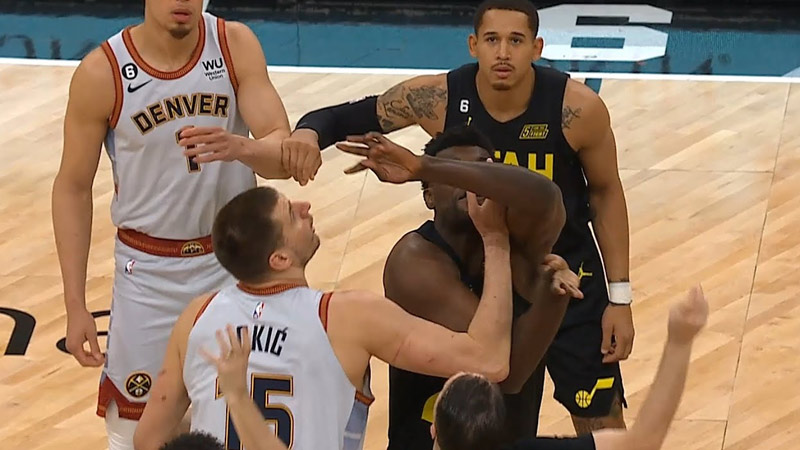Basketball is an exhilarating sport loved by millions around the world, known for its fast-paced action and skillful plays. However, like any competitive game, basketball has rules in place to maintain fair play and sportsmanship.
Personal fouls are a crucial aspect of the game, as they not only affect the flow of play but also impact the individual players and teams.
In this blog post, we will delve into the five types of personal fouls in basketball, shedding light on what they entail, how they happen, and their implications for both the offending and fouled players.
What are Personal Fouls in Basketball?
Personal fouls in basketball are infractions that occur when a defensive player makes illegal physical contact with an offensive player. These fouls can happen during various game situations, such as guarding, blocking, or reaching.
Each personal foul committed by a player is recorded, and when a player accumulates a certain number of personal fouls (usually five in most leagues), they are disqualified from the game.
Personal fouls result in free-throw opportunities for the fouled team, allowing them to score uncontested points from the foul line. It is essential for players to avoid excessive physicality and play within the rules to minimize personal fouls.
What Are the 5 Personal Fouls in Basketball?
Here are the 5 different types of personal fouls in basketball.
1. Blocking Foul
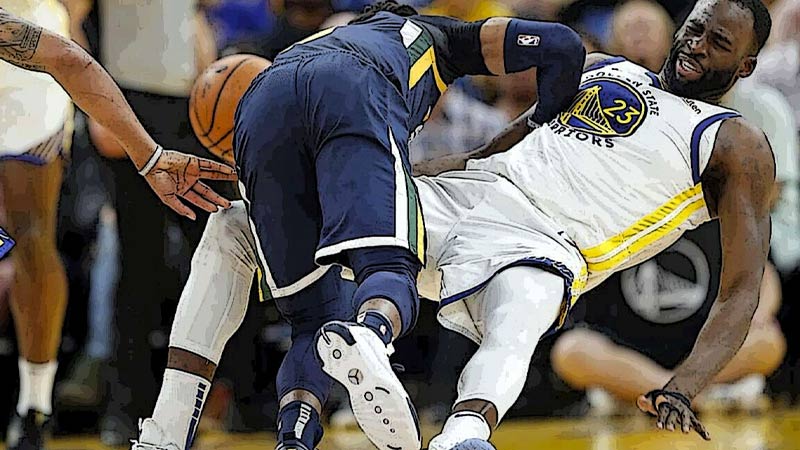
Source: gaimday.com
Blocking foul is a common infraction in basketball that occurs when a defensive player impedes the progress of an offensive player with the ball. It is one of the two major types of personal fouls, with the other being the charging foul.
A blocking foul is typically committed when the defender fails to establish a legal defensive position and instead makes contact with the offensive player.
How Does It Happen?
A blocking foul can happen in various scenarios, but it often occurs during dribble drives, fast breaks, or when an offensive player attempts to penetrate to the basket. The defender must be in a legal guarding position before the offensive player initiates the contact.
To establish a legal guarding position, the defender must be stationary, have both feet on the floor, face the opponent, and be on the path the offensive player is taking.
If the defender is not in a legal guarding position, moves into the offensive player’s path, or initiates contact by leaning, reaching, or making body contact, a blocking foul may be called.
It’s essential to note that incidental contact, such as slight body bumps that do not hinder the offensive player’s progress, may not result in a blocking foul.
Penalties for Blocking Fouls
When a blocking foul is called, the offensive player is awarded free throws, depending on the team’s foul count. In most basketball leagues, teams enter a bonus situation after the opponent commits a specific number of team fouls (usually 5 or 7).
This means that any subsequent defensive foul will result in the offensive player being awarded free throws, regardless of whether they were shooting or not.
In addition to the free throws, the team that was fouled retains possession of the ball for a new offensive possession. However, if the offensive player was attempting a shot and made it despite the foul, they are awarded the basket and one additional free throw.
Defensive Three-Second Violation in Blocking Fouls
In some basketball leagues, there is a defensive three-second violation rule, which means a defender cannot remain in the paint or key area for more than three seconds unless they are actively guarding an offensive player.
If the referee calls a defensive three-second violation, it results in a turnover and possession given to the offensive team.
Intentional Blocking
Deliberately obstructing an offensive player without making a legitimate attempt to guard them is considered an intentional foul. Intentional fouls can result in more severe penalties, such as free throws and possession for the fouled team.
Player Foul Limit
In most basketball leagues, players are allowed a certain number of personal fouls before being disqualified from the game. This limit helps prevent players from intentionally fouling excessively.
Blocking fouls occur when a defensive player impedes the progress of an offensive player without establishing a legal guarding position. The penalties for this foul include awarding the offensive player free throws and a new offensive possession.
2. Charging Foul
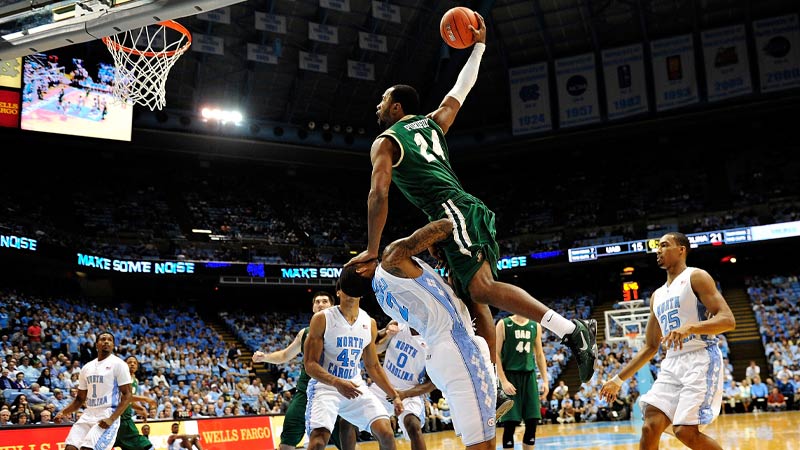
Source: bleacherreport.com
A charging foul, also known as an offensive foul, occurs when an offensive player makes significant illegal physical contact with a defensive player who has already established a legal defensive position.
This foul is called against the offensive player who charges into the defender, creating an unfair advantage and impeding the defender’s ability to maintain a proper guarding position. Charging fouls are crucial in maintaining fair play and protecting defensive players from reckless and dangerous collisions.
How Does It Happen?
A charging foul typically happens when an offensive player is driving toward the basket or attempting to create space to make a play. The defender must establish a legal guarding position by planting both feet and facing the offensive player before contact occurs.
If the offensive player continues to move and initiates contact by colliding into the defender’s torso, arms, or legs, the referee may call a charging foul.
To draw a charging foul, the defender must be stationary, have both feet on the floor, and be in position before the offensive player begins their drive. If the defender is moving, sliding, or still shuffling their feet, the foul is usually called against the defender instead, as they are not in a legal guarding position.
Penalties for Charging Fouls
When a charging foul is called, the offensive player is penalized, and possession of the ball is awarded to the opposing team. The points scored during the possession in which the foul occurred are nullified, and the basket does not count.
The defensive team gets the ball from the sideline or baseline, depending on the specific game situation. It is important to note that in some basketball leagues and levels, personal fouls are also recorded for charging fouls.
If a player accumulates a certain number of personal fouls in a game, they may be disqualified, limiting their playing time and potentially affecting their team’s performance.
Restricted Area
In professional and college basketball, there is a restricted area painted on the floor near the basket. If a defensive player is standing inside this area when they attempt to draw a charging foul, the call is more likely to be called a blocking foul against the defender.
Flopping
Flopping refers to an exaggerated or dramatic movement by a player to make it appear as if more significant contact occurred than it actually did. Flopping is considered unsportsmanlike behavior and can result in a warning, technical foul, or fine, depending on the league’s rules.
Defensive Positioning
Defensive players need to be careful not to move under offensive players in mid-air, as this can result in a dangerous play and may lead to a blocking foul called against the defender.
Charging fouls play a vital role in basketball as they contribute to fair play, player safety, and maintaining the integrity of the game. Properly executing a charging foul requires defensive players to exhibit excellent timing, positioning, and awareness of the offensive player’s movements.
3. Holding Foul
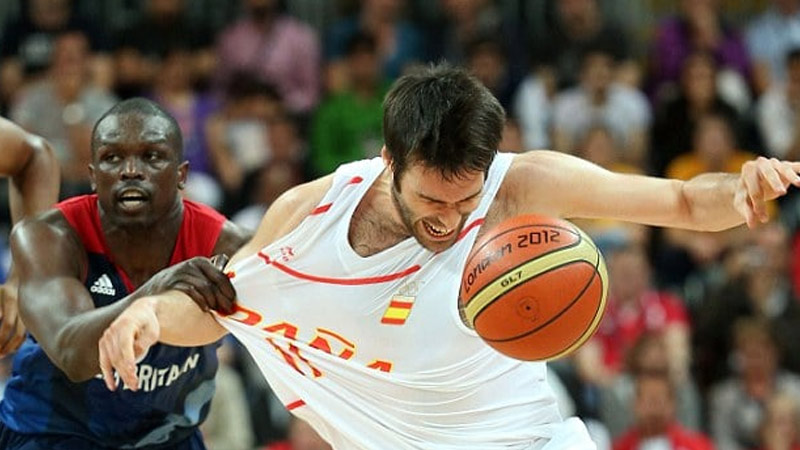
Source: betterbasketball.com
a “Holding Foul” is a type of personal foul that occurs when a defensive player impedes the movement of an offensive player by grabbing, holding, or restraining them physically.
This foul is committed when a defender uses their hands, arms, or body to prevent the offensive player from making a play, getting open, or receiving a pass. Holding fouls can disrupt the flow of the game and give an unfair advantage to the defensive team, which is why they are strictly penalized by the referees.
How Does It Happen?
Holding fouls can occur in various situations on the basketball court. Some common scenarios include:
- While guarding a player with the ball: The defender may hold the offensive player’s arm, jersey, or body to restrict their movement and prevent them from driving to the basket or making a pass.
- Screening: Sometimes, defenders may use holding tactics while setting screens to impede the progress of the offensive player trying to navigate around the pick.
- Rebounding: During a rebounding battle, defenders may resort to holding the opposing player to prevent them from securing the ball.
- Off-the-ball situations: Holding fouls can also occur when a player is trying to move off the ball to get open for a pass or shot, and the defender holds them to prevent them from doing so.
Penalties for Holding Fouls
When a player commits a holding foul, the opposing team is awarded certain penalties. The severity of the penalties depends on the team’s foul situation and the league or competition rules. The general penalties for holding fouls are as follows:
- Personal Foul: The player committing the holding foul is charged with a personal foul. If the player accumulates too many personal fouls during a game, they may be disqualified from further participation.
- Team Fouls: If the foul occurs during a team’s bonus situation (i.e. when the opposing team has accumulated a certain number of team fouls in a quarter or half), the fouled player is awarded free throws. Each subsequent holding foul during the bonus situation results in more free-throw attempts for the fouled player.
- Turnover: In some cases, if the holding foul is particularly severe or intentional, the fouled player’s team may be awarded possession of the ball.
- Technical Foul: If a player commits repeated holding fouls or demonstrates unsportsmanlike conduct during the game, they may be issued a technical foul, resulting in free throws for the opposing team.
Holding fouls are often assessed at the discretion of the referees, who must determine whether the contact was incidental or if it significantly impeded the offensive player’s movement.
Coaches and players are expected to adapt their defensive strategies to avoid holding fouls, focusing on proper positioning, footwork, and legal defensive techniques.
Holding fouls are considered a part of the “Hack-a-Shaq” strategy, where defenders intentionally commit fouls on poor free-throw shooters to send them to the free-throw line and reduce their team’s scoring opportunities.
Holding fouls in basketball occur when a defender uses physical contact to restrict the movement of an offensive player. These fouls lead to penalties such as personal fouls, free throws for the opposing team, and potential turnovers. Players and coaches should strive to play defense legally, without resorting to holding tactics that can disrupt the game and create an unfair advantage.
4. Pushing Foul
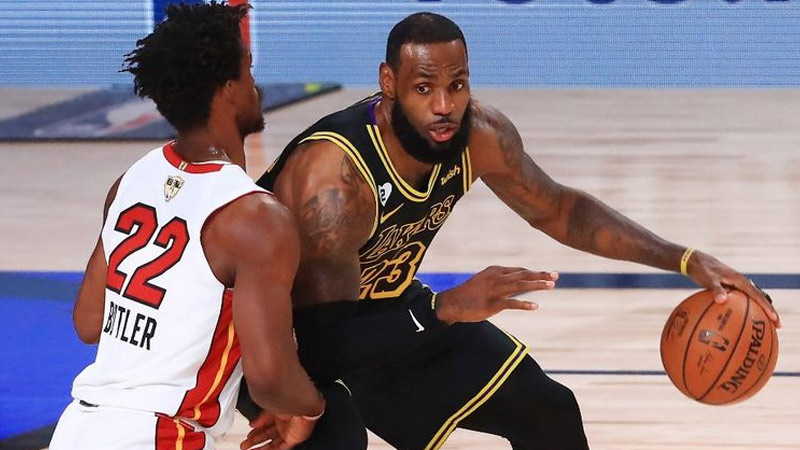
Source: kompas.com
A “Pushing Foul” is a type of personal foul in basketball that occurs when a player forcefully pushes, shoves, or extends their arms to create separation between themselves and an opponent.
This foul is committed during a live ball situation, meaning while the game clock is running and the ball is in play. Pushing fouls are a common occurrence in the fast-paced, physical game of basketball and can have significant implications for both the player committing the foul and the opposing team.
How Does It Happen
Pushing fouls can happen in various situations on the basketball court. Some common scenarios include:
- Driving to the Basket: A player may commit a pushing foul while trying to drive past their defender toward the basket. In an attempt to gain an advantage, the offensive player might use their hands or body to push the defender away.
- Rebounding Battles: When players are vying for a position to grab a rebound, they might resort to pushing their opponents to gain a better position under the basket.
- Screening: Sometimes, offensive players can commit a pushing foul while setting screens to free up their teammates. If the player extends their arms forcefully to impede the defender’s movement, it can be considered a foul.
- Post Play: In the low post area, players often engage in physical battles to gain an advantage. However, if a player uses excessive force to push their way past an opponent, it will be deemed a foul.
Penalties for Pushing Foul
The penalties for a pushing foul depend on the specific rules and regulations of the league or competition in which the game is being played. Generally, the consequences for a pushing foul are as follows:
- Personal Foul: A pushing foul is considered a personal foul. If a player accumulates a certain number of personal fouls (e.g., five in the NBA), they will be disqualified from the game.
- Free Throws: If the team committing the pushing foul is in the penalty situation (usually after a certain number of team fouls), the fouled player’s team will be awarded free throws. The number of free throws awarded will depend on whether the foul was committed during a shooting or non-shooting situation.
- Team Fouls: Pushing fouls count towards the team’s total fouls for the quarter or half. When a team reaches a specific number of team fouls (e.g., four in the NBA), their opponents will be awarded bonus free throws on all subsequent non-shooting fouls.
- Possession Change: In some leagues or competitions, an excessive or intentional pushing foul can result in a change of possession. The team that was fouled gains possession of the ball.
Player Discretion
Referees have some discretion in determining the severity of the push and whether it warrants a foul. Some incidental contact may not be called as a foul, but a forceful or aggressive push is more likely to be penalized.
Player Safety
Pushing fouls are often called to protect player safety and ensure fair play. Excessive pushing can lead to injuries and disrupt the flow of the game.
Technical Foul
In cases of extreme unsportsmanlike conduct or excessive arguing with officials about a pushing foul call, a player or coach may receive a technical foul, resulting in free throws for the opposing team.
A Pushing Foul is a common personal foul in basketball, occurring when a player forcefully pushes an opponent during a live ball situation. The penalties for such fouls include free throws, team fouls, and possible player disqualification. Pushing fouls are an essential aspect of maintaining fair play and player safety in the game of basketball.
5. Shooting Foul
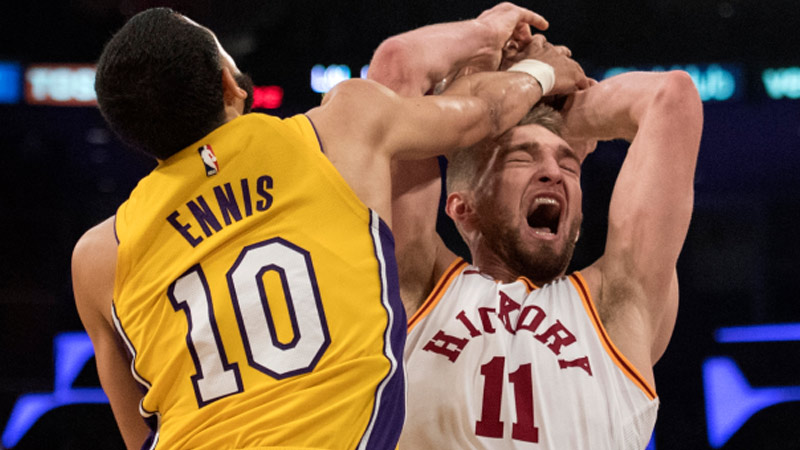
Source: dailybulletin.com
A shooting foul is a type of personal foul that occurs when a defender makes illegal physical contact with an offensive player who is in the act of shooting the basketball.
This foul is a significant violation that can potentially affect the outcome of the game, as it grants the offensive player an opportunity to score additional points from the free-throw line.
How Does It Happen
A shooting foul can happen in various scenarios. Common situations include:
- Jump Shot: When an offensive player attempts a jump shot, and a defender makes contact with the shooter’s arm or body, impeding the shooting motion.
- Layup or Dunk: If a defender interferes with the offensive player’s attempt to lay the ball up or dunk it, either by hitting the shooter’s arm or making body-to-body contact, it will be considered a shooting foul.
- Three-Point Shot: If a defender illegally contacts an offensive player attempting a three-point shot, causing disruption in the shooting motion, it results in a shooting foul.
- And-One Situation: Sometimes, an offensive player successfully makes a basket despite the defensive contact. In this case, the player is also awarded a free throw as a bonus for the made basket, creating an “and-one” opportunity.
Penalties for the Foul
The penalties for a shooting foul can vary based on the specific situation:
Free Throws: The fouled offensive player is awarded free-throw attempts. The number of free throws depends on whether the player was attempting a two-point or three-point shot:
- If the shot was inside the three-point line, the player gets two free-throw attempts.
- If the shot was beyond the three-point line, the player gets three free-throw attempts.
No Defensive Rebound: Unlike regular field goal attempts, if a shooting foul occurs, there is no defensive rebound available for the opposing team until the free throws have been attempted.
Points Awarded: If the offensive player successfully makes the free throws, their team will be awarded the corresponding number of points (either two or three).
Personal Foul Accumulation: The defender who committed the shooting foul will be charged with a personal foul. If a player accumulates a certain number of personal fouls (usually five in most leagues), they will be disqualified from the game.
If a shooting foul occurs in the act of shooting and the offensive player is injured on the play and unable to shoot the free throws, the team is allowed to choose a substitute shooter to take the free throws in their place.
In late-game situations, a shooting foul on a three-point shot can be especially costly for the defending team, as it presents an opportunity for the offensive team to score three points with no time running off the clock.
FAQs
What is a personal foul in basketball?
A personal foul in basketball is an infraction that occurs when a defensive player makes illegal physical contact with an offensive player. These fouls can range from body-to-body contact to impeding the shooter’s motion during a shot attempt.
Each personal foul committed is recorded against the player, and multiple fouls can lead to disqualification from the game.
How are personal fouls determined?
Personal fouls are called by the referees during the game. Referees closely monitor the players’ actions and intervene when they observe any infringement of the rules related to physical contact. The call is made based on the severity of the contact and its impact on the flow of the game.
What are the penalties for personal fouls?
The penalties for personal fouls depend on the specific situation. Generally, the fouled player is awarded free-throw attempts, allowing them to score uncontested points.
The number of free throws granted depends on the type of foul and whether the player was attempting a two-point or three-point shot. Additionally, accumulating a certain number of personal fouls can lead to player disqualification.
How can players avoid personal fouls?
Players can minimize personal fouls by maintaining good defensive positioning, avoiding unnecessary body contact, and using their feet to cut off offensive players instead of reaching with their hands.
Defensive players should focus on anticipating offensive moves rather than resorting to physicality, while offensive players can use speed, agility, and deception to avoid defenders and draw fouls.
Wrapping Up
Personal fouls in basketball are an integral part of the game, ensuring fair play and player safety. By understanding the five types of personal fouls – blocking, charging, hacking, reaching-in, and shooting – players can enhance their knowledge of the sport and improve their skills on both ends of the court.
Avoiding unnecessary physical contact, practicing disciplined defense, and making smart offensive moves are key elements to excel in basketball while keeping fouls to a minimum.
Embracing the spirit of fair competition, players can enjoy the game while adhering to the rules that govern it. Have a nice day.

